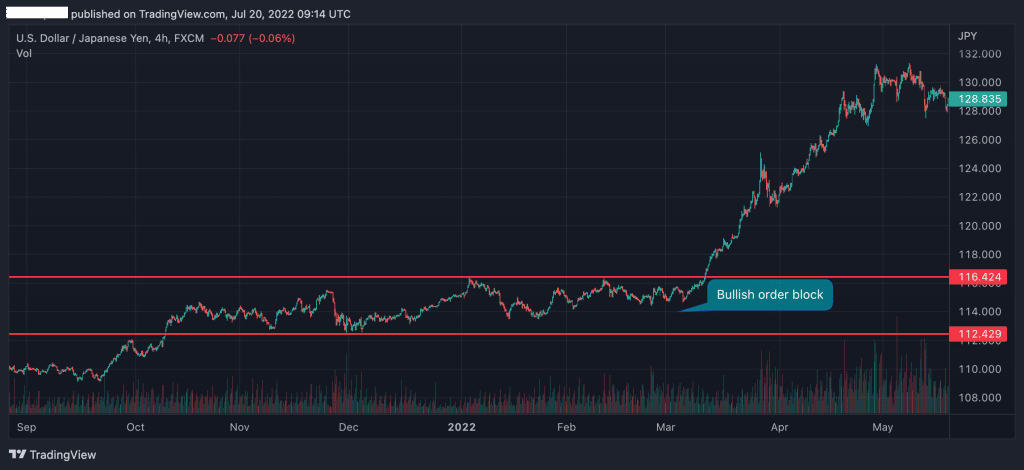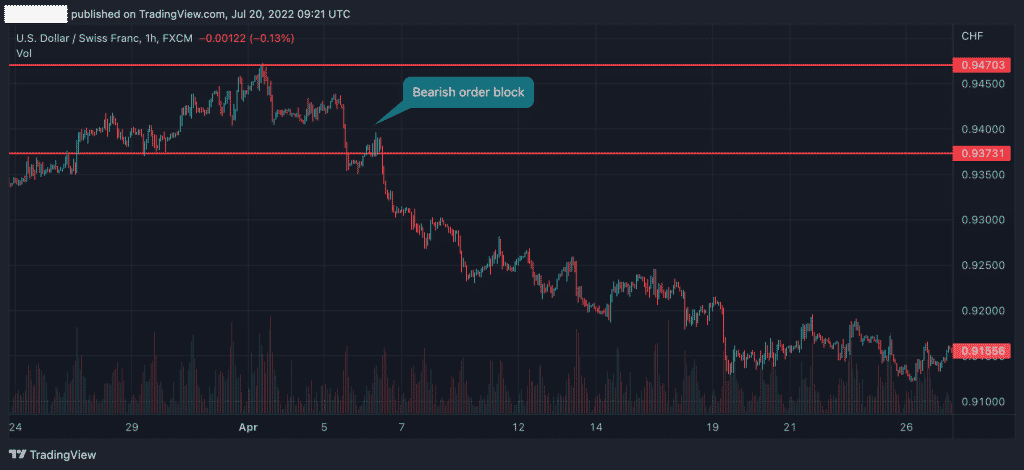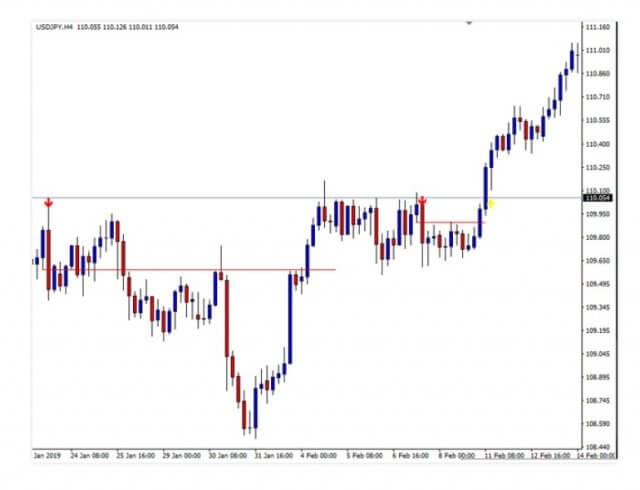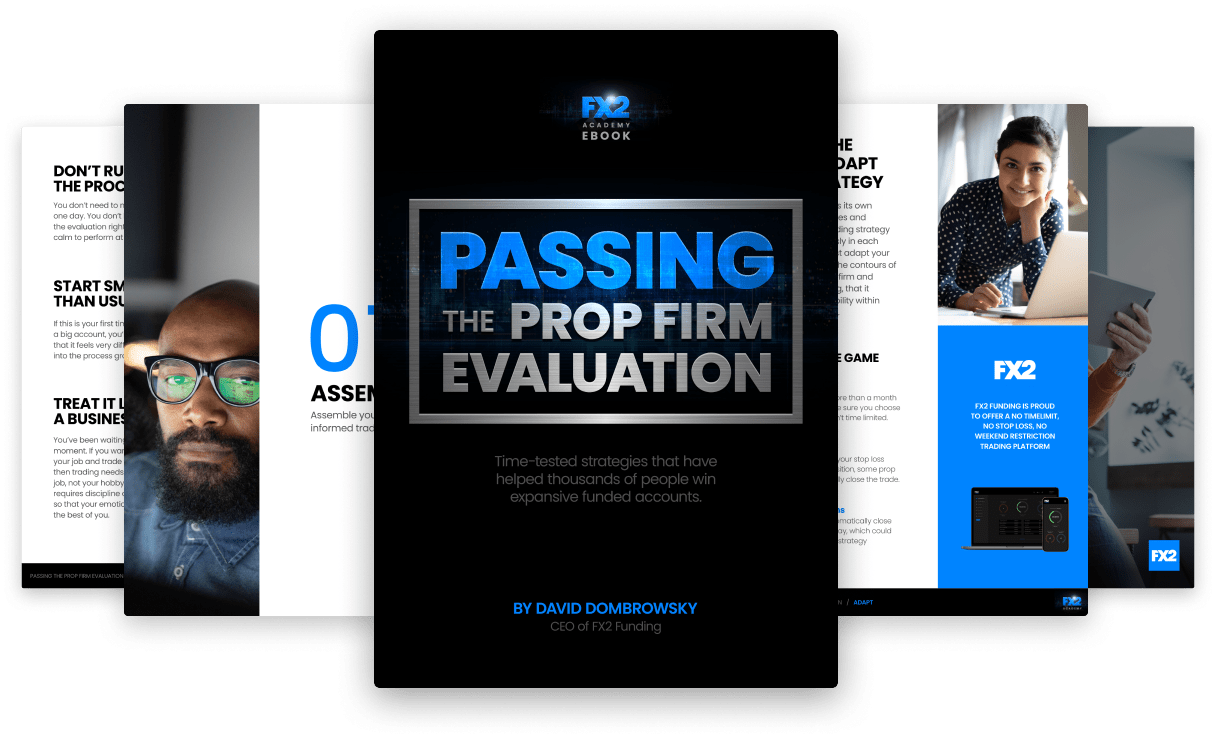Not sure if cryptocurrency CFDs trading is right for you? Check out our tips on crypto CFDs trading strategy, benefits, and possible risks of crypto CFDs on the Index Fundings Blog.
The forex markets pool all kinds of market participants. They are looking to take advantage of the slightest price change and squeeze a profit. In addition to retail traders that operate trading accounts running into thousands of dollars, there are banks and financial institutions that wield too much power in the market. While it is usually easy for retail traders to open and close a position. It's always a different ball game for institutions and banks looking to trigger positions running into hundreds of millions of dollars. Order blocks in forex are one such play deployed by large players.
Central banks and institutions cannot buy and sell currency pairs as they wish. As doing so can trigger significant volatility and unexpected moves. Therefore, large institutions are often forced to split their orders and execute them in a given order to avoid spooking the market and triggering wild swings.
Order blocks occur when central banks or other large financial institutions accumulate large quantities of the currency pair they wish to buy or sell in one big order. While such institutions cannot complete a buy or sell in one big order, they must create unique “blocks.”
The “blocks” allow the institutions to split their orders into smaller blocks or orders. The orders will then be executed at different price points or levels to avoid spooking the market. Or triggering extreme volatility. Institutions will continue to trigger small orders and blocks repeatedly until they reach their target. The result is price breaking out in a given direction in volume after a long period of consolidation.
For instance, if a bank wants to open a buy position worth $200 million, it will split the order into four parts, each worth $50M. The orders will then self-execute at different levels.
Institutions typically use sophisticated orders not to disclose their involvement in the market. For instance, they can place an order that shows 4 on the bid or sell side even though they have a block of 1,000.
There are two types of order blocks in forex:
A bullish order block occurs when a large financial institution accumulates or buys large quantities of a currency pair in the forex market.
Such orders occur whenever central banks want to weaken the strength of their underlying currency. So, for instance, when the Bank of Japan wants to weaken the Yen in a bid to bolster the country’s export business, it accumulates a significant position in the US dollar.
The BOJ buying lots of US dollars only weakens the Yen, thus making the country’s exports more affordable.

The chart above shows a period when the USDJPY was in range bound, with the pair struggling to make any new highs or lows. During this period, some candlesticks came into play, supported by high trading volumes.
The high trading volumes affirm the accumulation as institutions placed blocks in the market. Later, the pair broke out to the upside as the accumulation triggered increased upward momentum.
If momentum shifts from bearish to bullish, the focus should be on bullish order blocks. Consequently, it would be a safe play to open long or buy positions to take advantage of the large financial institution's bid to instigate higher prices in the market.
It mainly occurs when a central bank wants to strengthen its own currency. In this case, the central bank will sell the counter currency, weakening it at the expense of its own currency. For instance, the Swiss central bank could sell a large amount of the US dollar and buy large amounts of Swiss francs.

Such action weakens the dollar and strengthens the franc. The net effect would be the tumble of the USDCHF pair, as shown above. The distribution phase shows a period where the central bank placed order blocks to weaken the US dollar at the expense of the Swiss franc.
Whenever a market shifts from bullish to bearish, the focus should shift from bullish order blocks to bearish order blocks. Consequently, one should open a short trade to be in sync with the large financial institutions fueling bearish momentum.
Looking to take advantage of order blocks and trade in the direction that large financial institutions are placing trades? Well, it is essential to note that forex order blocks don’t occur daily. No one knows when central banks will enter a market through order blocks. They are a rare phenomenon, making it hard to add to a trading plan.
While order blocks in forex can take some time to occur, they present some of the best trading opportunities. The best way to identify them is when the markets are range bound. It is usually an early sign of accumulation and distribution whenever currency pairs struggle to make new highs or lows.
The longer the distribution range, the bigger the move presenting an ideal opportunity to profit from a significant move. Therefore, it is crucial to plot support and resistance levels.
Whenever the price breaks the support or resistance level on a considerable volume, it affirms a buildup in momentum. For instance, if the price breaks the resistance on volume, it shows a buildup in upward momentum after significant accumulation. Consequently, this will be the best time to open a buy position to be in sync with financial institutions that place long positions.

The USDJPY pair shows the price in an uptrend before it hits strong resistance and resorts to trading in a range. The bullish order block consolidation takes some time after which the price breaks to the upside
Likewise, whenever the price breaks below the support level after a long period of consolidation, it affirms a bearish block break out. As a result, this would be the best time to enter a short position to be in sync with the central banks and other financial institutions.
While engaging in order block trading, the best forex order block indicator is one capable of tracking the underlying volume. A volume indicator makes it easy to know if the accumulation or distribution is in high volume. A high volume means that a big player is accumulating a big position pending price break out in a given direction.
Understanding what institutional traders do in the market is crucial to accruing edge trading currency pairs. To know what they are doing, identifying high-probability order blocks is vital.
Identifying order blocks in smaller timeframes can be challenging, given the volatility of such chart patterns. Order blocks are best found on higher timeframes, making it easy to identify areas of price consolidation. Periods of consolidation whereby price moves up and down without making any new highs, let alone lows, most of the time signal accumulation and distribution.
In a bullish market, often periods of exhaustion kick in, resulting in prices moving in a range at the top of the chart. The weakness presents an opportunity for large institutions to accumulate positions while planning to steer prices higher. Consequently, whenever the price breaks above the resistance level, it affirms a bullish order block confirming the prospects of the price breaking out to the upside and creating new higher highs.
In the case of a bearish market, a period of consolidation may kick in whereby price struggles to tumble further, let alone move up and create new higher highs. The rotation that occurs in a range resulting in range-bound price action often signals periods of distribution if it occurs in large volume.
Price breaking out to the downside on huge volume affirms the bearish order block breakout paving the way for the price to tank and create new lower lows.
Forex order blocks are essential aspects that provide valuable insights into what institutions are doing. They avert the need to randomly guess the direction price is likely to move. One of the best ways of staying in sync with the market is to trade in the direction of financial institutions as they wield too much power, thus steering the market in a given direction.
Higher timeframes provide a deeper insight into the quality of order blocks. Additionally, higher timeframe charts show a bigger picture of price action, making it easy to identify areas of accumulation and distribution before a bearish order block or bullish order block breakout occurs. Once the price leaves the order block area with high momentum, that offers an ideal trading signal.

Not sure if cryptocurrency CFDs trading is right for you? Check out our tips on crypto CFDs trading strategy, benefits, and possible risks of crypto CFDs on the Index Fundings Blog.
Read about trading exotic currencies: what are the pros and cons? Check out the most volatile exotic currency pairs from our experts on the Index Fundings Blog.
Do you know how to trade gold? Check out gold trading strategies and tips from our experts and find out the best indicator for gold trading on the Index Fundings Blog.
Check out WTI and Brent crude oil trading methods: how to trade oil futures, options, CfDs, and more. Read about spot oil market on the Index Fundings Blog.
Read about Forex trading sessions and find out the best time for Forex trading on the Index Fundings Blog. Tokyo, London, and New York Forex market timings: when is the market most liquid?

Notifications